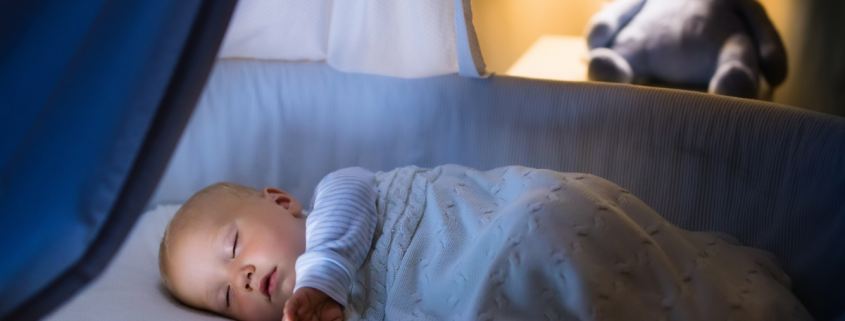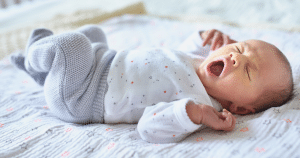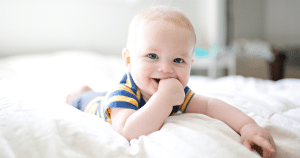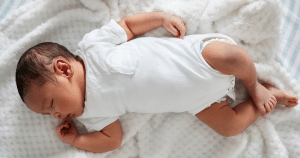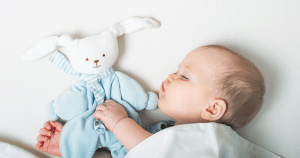Creating the Perfect Sleep Environment
Disclosure: You may find links within this article, this means that we could earn a small commission if you purchase a product through our links.
Sleep is a skill that our little ones have to learn. Some babies find it easier than others to learn how to settle and resettle. We need to give them lots of opportunities to practice but we also want to help them along the way where and when we can.
To have a well rested baby we want to get both their naps and nighttime right. In getting this right, the perfect sleep environment for your newborn or older baby can often be overlooked. We focus on the baby and what they are doing, not the environment around them.
The Best Way to Help Your Little One
One of the best ways to help your little one sleep through the night, settling and resettling on their own is to maintain consistency. It helps them learn what’s coming next so it’s predictable, which provides reassurance. We all like reassurance when learning something new!
Consistency is Key
Consistency is great with things like the bedtime routine, but we also need to provide it for the sleep environment too.
Why? Well, no baby (or adult for that matter) truly ‘sleeps through’. We have small wakings between our lighter, dreaming stages of sleep and our deeper phases. These partial wakings, which are totally normal, will become full wakings if there are changes to their environment that we notice. For us as adults, it may be that the light downstairs is now on and it wasnt when we went to bed. We’d get up to investigate (or get scared and hide under the covers). For a baby this may be that the parents are no longer there, any motion has stopped (for babies rocked to sleep or in a pram), changes in brightness, white noise has stopped, or it’s now too hot or cold.
Ideally we are aiming for the environment that they fall asleep in to be the same as that they wake in so they don’t notice a difference and drop straight back to sleep for the next sleep cycle. It’s important to think of consistency when we create the best sleep environment for our baby.
Five Sleep Tricks
Here are five sleep tips to tick off that can help your baby fall asleep.
Scan the environment for distractions
What could be distracting and therefore overstimulating for your little one? You don’t want them to be linking their sleep cycles at lunch to then wake too soon to be distracted by something fun! I suggest you remove cot mobiles, placing them over a changing mat instead, scrap the light shows and cot toys (keep the cot clear for safe sleep) so they fall asleep without being distracted. Plain and boring always wins!
Replace noise with…eh…noise!
Keeping with the theme of distractions, noises can be very distracting, waking, frightening or overstimulating your little one. They may also get a bit of FOMO and just want to be involved. Think a bit wider than the obvious. Where’s the boiler located, do the pipes clank? Is the traffic building at 5am? One of the easiest ways to control these noises is masking them with white noise. Pick something boring like radio static. Don’t use the white noise toys as these often turn off after 45 minutes. The noise won’t necessarily send your baby to sleep, rather, it just encourages your baby to sleep for longer. It has to be consistent and on for the whole duration of the nap or bedtime to avoid them noticing a change if the baby wakes too soon.
Cooler is better
A perfect sleep environment should be about 18-20 degrees. It may feel a little cool to us as adults. Measure this around 3-5am when the home and our internal temperature is at its lowest. Remember a baby should never be wrapped in enough clothes/blankets that they feel hot to the touch. Nor should they have icy hands or feet, if they get too cold, it’s one of the most common reasons for night waking. Sleeping bags are perfect as they don’t fall off during the night and you can check the tog rating is correct for the season and room temperature.
Darkness
A common saying is that babies can fall asleep anywhere. True, most may, and it can be convenient for us, but is it really good quality sleep? A dark room for naps and bedtime is beneficial for a number of reasons. It helps keep the room cool and free from distractions. It’s a great environmental cue, darkness also means sleepy time and that helps their body clock to adjust. On the flip side, light exposure means daytime and play! Babies release melatonin (the sleepy hormone) from about 12 weeks. Melatonin release is aided by darkness. The body then starts to learn the difference between night and day, allowing for those long stretches at night to start developing (hooray!).
Ideally use blackout blinds because as a general rule of thumb it should be so dark that you couldn’t read a book in the room. At night, if you’re breastfeeding or going in and need to use a nightlight, have it on only briefly and then turn off when placing the baby back down. Avoid white and blue lights, red is great.
Baby Zen
One thing we forget is all sleep environments need to be calm and peaceful to allow us adults to switch off from the hustle and bustle of daily living or, for children, to fall asleep after a busy day of brain development! A lovely bedtime routine helps this transition. Be really consistent each night with time to wind-down and the bedtime routine. This helps the baby learn what’s coming next and there are no surprises to throw them off.
Just a note, we know settling babies can sometimes be tricky. If you find yourself becoming overwhelmed or upset when trying to settle your baby then be aware of this, try to take a few minutes to relax and re enter the room when calmer – emotions are easily transferred.
Calm adults, hushed tones and a perfect sleep environment can work wonders.
Gemma Coe: Baby & Child Sleep Specialist
www.childsleepspecialist.co.uk
@childsleepspecialist
Sources:
Live Love Sleep, Best Sleeping Environment For Newborns & Babies, November 2022
Wee Bee Dreaming Pediatric Sleep Consulting, Creating an Ideal Sleep Environment for Your Baby [a.k.a. The Baby Cave], October 2017
Gemma Coe is a Baby and Child Sleep Specialist based in the UK but working with clients worldwide. Gemma has had a successful career in medical education, healthcare and teaching,and she retrained as a sleep specialist when she became obsessed with her own little one's sleep! Gemma finds sleep absolutely fascinating and loves the opportunities that arise with helping families resolve and reclaim their nights.
Prior to becoming a sleep specialist, Gemma worked in teaching and medical education for 20+ years having originally trained as a children's nurse. Gemma applies all this knowledge and practice to her role as a sleep specialist and helps to support families to get some really positive outcomes.
Gemma is also a proud mum to her two children, Elodie and Charlie.



